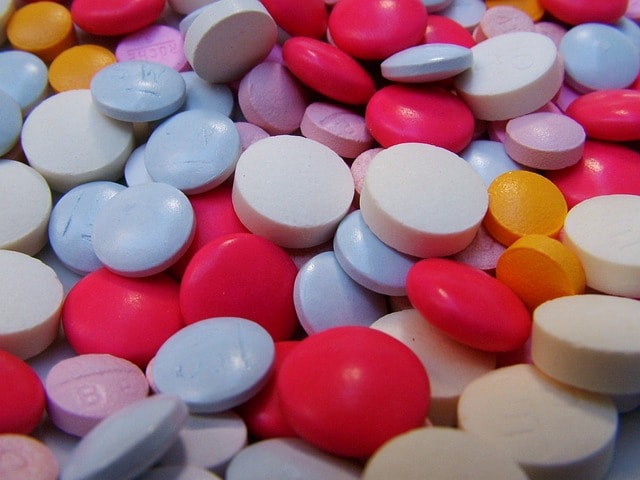How Do I Quit Vyvanse? A Guide to Withdrawal and Recovery Strategies
Understanding Vyvanse and Its Effects
What is Vyvanse?
Vyvanse is a prescription medication primarily used to treat attention deficit hyperactivity disorder (ADHD) and binge eating disorders. Vyvanse is also used to manage binge eating disorders, and it is important to taper off the medication gradually to avoid withdrawal symptoms. As a central nervous system stimulant, Vyvanse works by increasing dopamine and norepinephrine levels in the brain, enhancing focus and impulse control. While it can be effective, Vyvanse is a controlled substance (CII) due to its potential for misuse and dependence.

Vyvanse Uses and Effects
Vyvanse is commonly prescribed to individuals aged six and older for ADHD and is available in capsule or chewable tablet forms. While it helps manage ADHD symptoms, misuse can lead to physical and psychological dependence.
Vyvanse Withdrawal and Its Causes
Dependence and Its Impact on Withdrawal Symptoms
Dependence on Vyvanse often occurs with prolonged use, misuse, or higher-than-prescribed doses. Symptoms of Vyvanse withdrawal, including acute withdrawal symptoms, can appear as early as 24 hours after the last dose and may include extreme fatigue, depression, and intense cravings. Vyvanse abuse, such as snorting or injecting the drug, increases the risk of severe withdrawal. Professional help is crucial in recovering from drug addiction, as substances like Vyvanse carry significant risks, including potential for abuse and dangerous withdrawal symptoms.
Vyvanse Withdrawal: What to Expect
Withdrawal symptoms typically peak between 3-5 days after cessation and may include:
-
Physical symptoms: Headaches, muscle aches, and sleep disturbances.
-
Psychological symptoms: Anxiety, depression, and mood swings.
Common Symptoms of Vyvanse Withdrawal

Physical Symptoms
Vyvanse withdrawal symptoms can cause changes in appetite, headaches, and blood pressure fluctuations. Recognizing these symptoms is critical to seeking appropriate help.
Psychological Symptoms
The psychological withdrawal symptoms reflect the brain’s adjustment to the absence of Vyvanse, often manifesting as irritability, anxiety, and depression.
Experience Withdrawal Symptoms
Experiencing withdrawal symptoms from Vyvanse can be a challenging and uncomfortable process. When the body is no longer receiving the medication, it must adjust to the absence of the stimulant, leading to various withdrawal symptoms. The severity and duration of these symptoms can vary based on factors such as the length of time the medication was taken, the dosage, and individual tolerance.
Common withdrawal symptoms from Vyvanse include:
-
Fatigue and lethargy
-
Irritability and mood swings
-
Insomnia and sleep disturbances
-
Headaches and muscle pain
-
Nausea and vomiting
-
Diarrhea and abdominal pain
-
Increased heart rate and blood pressure
-
Rapid breathing and tremors
-
Muscle weakness and fatigue
-
Mood changes, including depression and anxiety
-
Confusion and hallucinations
-
Suicidal thoughts and behaviors
-
Seizures
It’s essential to seek medical attention if you’re experiencing severe withdrawal symptoms, as they can be life-threatening. A medical professional can provide guidance on managing withdrawal symptoms and developing a treatment plan to ensure a safe and comfortable transition off the medication.
Managing Vyvanse Withdrawal

Medical Detoxification
A structured medical detox is a key strategy for managing Vyvanse withdrawal symptoms, which often involves the use of prescription medications. Vyvanse is part of a class of stimulant drugs that require careful management during detoxification. Under professional care, individuals can experience tapering, reducing the intensity of symptoms like severe withdrawal symptoms and mood swings.
Therapy and Counseling
Therapeutic interventions, including group therapy and cognitive-behavioral therapy, can help manage crash symptoms and prevent relapse. Therapy can also help manage symptoms of a Vyvanse crash, which can include anxiety and irritability. Therapy also addresses stimulant use disorder, offering emotional support.
Overcoming Vyvanse Withdrawal Symptoms
Overcoming Vyvanse withdrawal symptoms requires a comprehensive treatment plan that addresses both the physical and psychological aspects of withdrawal. Here are some strategies to help manage withdrawal symptoms:
-
Medical Detoxification: A medical detox program can provide a safe and supportive environment to manage withdrawal symptoms. Medical professionals can administer medications to alleviate symptoms and prevent complications.
-
Therapy and Counseling: Therapy and counseling can help address the psychological aspects of withdrawal, such as depression, anxiety, and cravings. Cognitive-behavioral therapy (CBT) and motivational interviewing (MI) are effective therapies for managing withdrawal symptoms.
-
Support Groups: Joining a support group can provide a sense of community and connection with others who are going through similar experiences. Support groups can offer emotional support, guidance, and encouragement throughout the recovery process.
-
Lifestyle Changes: Making lifestyle changes, such as getting regular exercise, eating a healthy diet, and getting enough sleep, can help manage withdrawal symptoms and support overall health and well-being.
It’s essential to work with a medical professional to develop a personalized treatment plan that addresses your specific needs and circumstances. With the right support and guidance, it’s possible to overcome Vyvanse withdrawal symptoms and achieve a successful recovery.
Strategies to Prevent Vyvanse Withdrawal
Safe Use and Tapering
To prevent withdrawal, Vyvanse should be used only as prescribed. Gradually tapering off the medication under a healthcare provider’s supervision minimizes the risk of severe symptoms.
Lifestyle Adjustments
Incorporating a healthy lifestyle, including proper sleep, nutrition, and stress management, can alleviate milder symptoms and support recovery.
Quitting Vyvanse Safely
Cold Turkey vs. Tapering
While some can stop Vyvanse abruptly, tapering is often safer, particularly for those on higher doses or with a history of extreme fatigue during withdrawal. A healthcare provider can guide the best approach.
Recovery from Vyvanse Addiction
Seeking help from addiction treatment centers ensures a comprehensive recovery plan for drug addiction. Programs address physical dependence, withdrawal, and co-occurring conditions like eating disorders.
Binge Eating Disorder and Vyvanse Withdrawal
Binge eating disorder (BED) is a common comorbidity with attention deficit hyperactivity disorder (ADHD), and Vyvanse is often prescribed to treat both conditions. However, Vyvanse withdrawal can exacerbate BED symptoms, leading to a relapse in binge eating behaviors.
Research suggests that individuals with BED who take Vyvanse may experience a higher risk of relapse during withdrawal due to the medication’s effects on appetite regulation and food cravings. Additionally, the emotional and psychological distress associated with Vyvanse withdrawal can trigger binge eating behaviors as a coping mechanism.
To manage BED symptoms during Vyvanse withdrawal, it’s essential to work with a medical professional who can provide guidance on managing withdrawal symptoms and developing a treatment plan that addresses both conditions. This may include:
-
Medications to manage withdrawal symptoms and cravings
-
Therapy and counseling to address emotional and psychological distress
-
Support groups to provide emotional support and guidance
-
Lifestyle changes, such as regular exercise and a healthy diet, to support overall health and well-being
By addressing both Vyvanse withdrawal and BED symptoms, individuals can achieve a successful recovery and improve their overall quality of life.
Vyvanse Withdrawal Timeline and Symptoms
Timeline
The withdrawal process begins within 24-36 hours of stopping Vyvanse, peaks around 3-5 days, and gradually diminishes over a few weeks.
Symptoms to Watch
Common symptoms include fatigue, mood swings, and sleep disturbances. In severe cases, high blood pressure and rapid heart rates may occur.
Finding Help and Support
Professional Assistance
Reaching out to detox programs or outpatient treatment programs can help individuals safely navigate the detox process. Support groups offer additional resources and emotional support.
Long-term Recovery Strategies
Long-term recovery involves therapy, lifestyle changes, and managing cravings. Building a supportive environment is crucial for maintaining sobriety.
Find a Detox Center Near You
If you’re struggling with Vyvanse addiction or withdrawal, it’s essential to seek professional help. Finding a detox center near you can provide a safe and supportive environment to manage withdrawal symptoms and achieve a successful recovery.
Here are some tips to find a detox center near you:
-
Ask for referrals from your primary care physician or a mental health professional
-
Check online directories, such as the Substance Abuse and Mental Health Services Administration (SAMHSA) treatment locator
-
Contact your insurance provider to find in-network detox centers
-
Research local detox centers and read reviews from former patients
When selecting a detox center, consider the following factors:
-
Accreditation and licensure
-
Experience in treating Vyvanse addiction and withdrawal
-
Comprehensive treatment programs that address both physical and psychological aspects of withdrawal
-
Supportive and non-judgmental environment
-
Availability of medical and therapeutic staff
By finding a detox center near you, you can take the first step towards a successful recovery from Vyvanse addiction and withdrawal.
Visit SAMHSA for more information or contact us today.
Frequently Asked Questions
Vyvanse can sometimes be stopped cold turkey, but this approach is not recommended for everyone. Abrupt cessation can lead to withdrawal symptoms, including fatigue, depression, and mood swings. Individuals on higher doses or those who have taken Vyvanse for an extended period may benefit from a tapering strategy under the supervision of a medical professional. This method helps the body adjust gradually, reducing the severity of withdrawal symptoms.
The detox process typically begins within 24-36 hours after the last dose and peaks around 3-5 days. Acute symptoms, such as fatigue and irritability, often subside within one to two weeks. However, some individuals may experience lingering effects, like mood swings or cravings, for several weeks or months. The exact timeline depends on factors like the dose, duration of use, and individual metabolism.
Common symptoms of Vyvanse withdrawal include fatigue, depression, anxiety, mood swings, changes in appetite, and difficulty sleeping. Severe cases may involve high blood pressure and rapid heart rate. Management strategies include a medical detox program, therapy for emotional support, and lifestyle changes like maintaining a healthy diet and consistent sleep routine. These steps can help minimize discomfort and support recovery.
Yes, some natural strategies may help manage ADHD symptoms, but they should be used as a complement to professional treatment, not a replacement. Options include regular physical activity, mindfulness practices, and dietary adjustments, such as increasing omega-3 fatty acids. Cognitive-behavioral therapy (CBT) can also be effective in improving focus and impulse control. Always consult a healthcare provider before making changes to your treatment plan.





